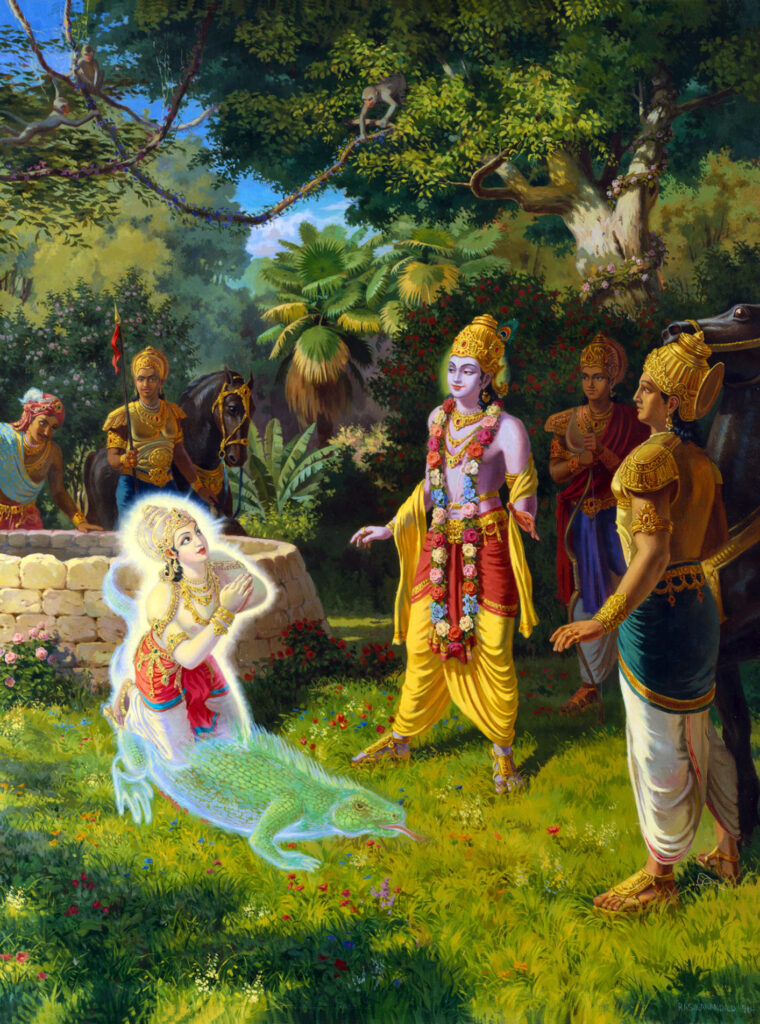While life on our planet lasts just 100 years or so, life in Swargaloka (the planetary system of the demigods) lasts for 10,000 years of the demigods (3.6 million years of our time, since 24 hours for them equals 360 earthly days). When a yogi reaches Maharloka (the next planetary system after Swargaloka), however, he can live for an entire day of Brahma or 4.32 billion years.
When the day of Brahma finishes, the fire emitted by Lord Ananta destroys all the lower planets of the universe (up to Swargaloka). Maharloka is not directly destroyed, but it becomes too hot even for the great sages who live there. The ones who are sufficiently qualified have at this point the possibility of ascending to the next planetary systems (Janaloka, Tapoloka, or Brahmaloka), according to their level of qualification, where they can live longer. The lifespan in Satyaloka is extraordinarily long since it’s tied to the life of Lord Brahma.

Although Brahma lives for 311.04 trillion years, his life is divided into two parardhas or two halves. This is mentioned in SB 3.11.34 and a few other references. In his commentary to SB 3.11.37, Srila Visvanatha Cakravarti Thakura mentions that at the end of the first half of the life of Brahma, the Universe is completely destroyed (including Brahmaloka) and all the great sages living there have to enter the body of Maha-Vishnu and wait to the reborn in the next Kalpa.
In this way, the lifespan in Brahmaloka is only half of the 311.040 trillion years of the total life of Brahma, or 155.52 trillion years. Not too bad still… 🙂
“In that planet of Satyaloka, there is neither bereavement, nor old age nor death. There is no pain of any kind, and therefore there are no anxieties, save that sometimes, due to consciousness, there is a feeling of compassion for those unaware of the process of devotional service, who are subjected to unsurpassable miseries in the material world.” (SB 2.2.27)
We have thus the following life expectancies for the inhabitants of the different planetary systems:
Earth: 100 years
Swargaloka: 3.6 million years
Maharloka: 4.32 billion years
Brahmaloka (Satyaloka): 155.52 trillion years
Starting from Maharloka, the inhabitants have very refined bodies, that are composed of subtle versions of the material elements. As one goes upwards, he acquires a progressively more refined type of body. By the point one reaches Satyaloka, there is no more gross body, only the subtle body, composed of mind, intelligence, and ego. However, this subtle body assumes a form similar to a gross body, which allows one to experience the different objects of sense gratification available there. With this subtle body, the yogi can gradually penetrate the coverings of the universe
After Satyaloka there are the seven elemental coverings of the universe, respectively composed of elemental earth, water, fire, air, ether, mahat-tattva, and false-ego, with each covering being ten times greater than the previous one. It’s described in the Brhad Bhagavatamrta that the personification of the material energy lives in each of these coverings, worshiping a different form of the Lord. Yogis who are in the ascending process can gradually go through each one of these coverings, where they have access to objects of sense gratification more refined and anything available inside the universe, enjoying lives without any trace of pain. In this way, the yogi can satisfy any remaining material desires he may still have.
An analogy that could be used to explain such a refined level of sense gratification is that a pig and a person eating in an expensive restaurant both enjoy eating, but the enjoyment of the pig is very gross, while the enjoyment of the person is more refined. While in the coverings, the yogi has the understanding that there is nothing better to be enjoyed anywhere in the material universe, therefore when he finally becomes tired of the enjoyment there, he doesn’t have any desire to return.
The last stage one has to go through is to renounce his ego, his concept of an identity different from one’s eternal identity as a pure soul, an eternal servant of Krsna. The false ego, our first and deepest layer of material conditioning is generated from the mahat-tattva, and on the way back the yogi merges it back to it, returning to his eternal identity as a pure soul. Thus, finally completely purified, the yogi is finally able to enter the spiritual planets, from where he never has to return.
“Only the purified soul can attain the perfection of associating with the Personality of Godhead in complete bliss and satisfaction in his constitutional state. Whoever is able to renovate such devotional perfection is never again attracted by this material world, and he never returns.” (SB 2.2.31)
We can see that a yogi who goes through this gradual ascending path can also achieve perfection, but only after an extremely long period, after passing through the different planetary systems and all the seven coverings of the material universe, a process painfully slow. Here we are not speaking about centuries or millenniums, but about trillions of years, a scale of time we can’t comprehend.
A devotee on the other hand can directly go to the spiritual world by just serving Krsna and concentrating his mind on Him. This direct process of devotional service is the most auspicious and effective way of deliverance.
There is nothing higher in the Vedas than pure devotional service to the Lord, this is the ultimate conclusion of the scriptures. After scrutinizingly studying the Vedas three times with great attention, Lord Brahma came to the conclusion that attraction to the Lord is the highest perfection of religion. Simply by practicing Krsna Consciousness, one can achieve the ultimate destination, just like yogis can achieve after trillions of years.
